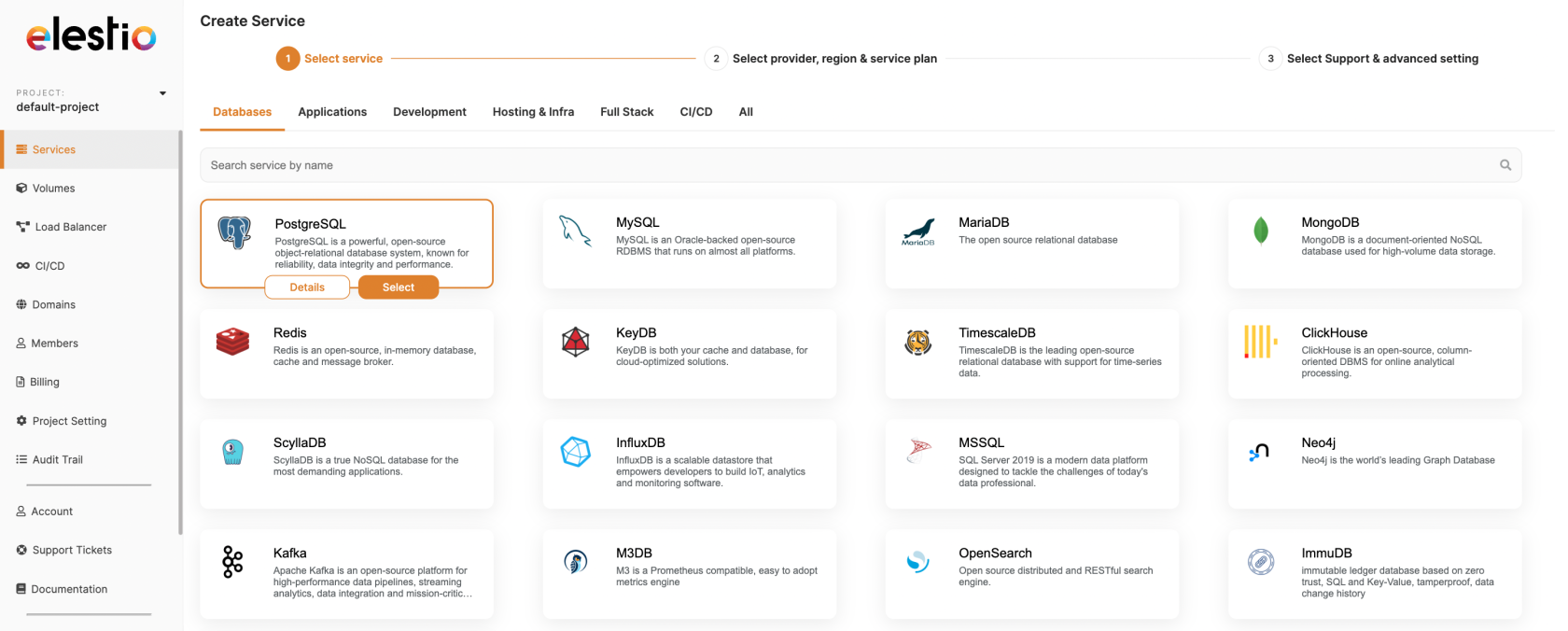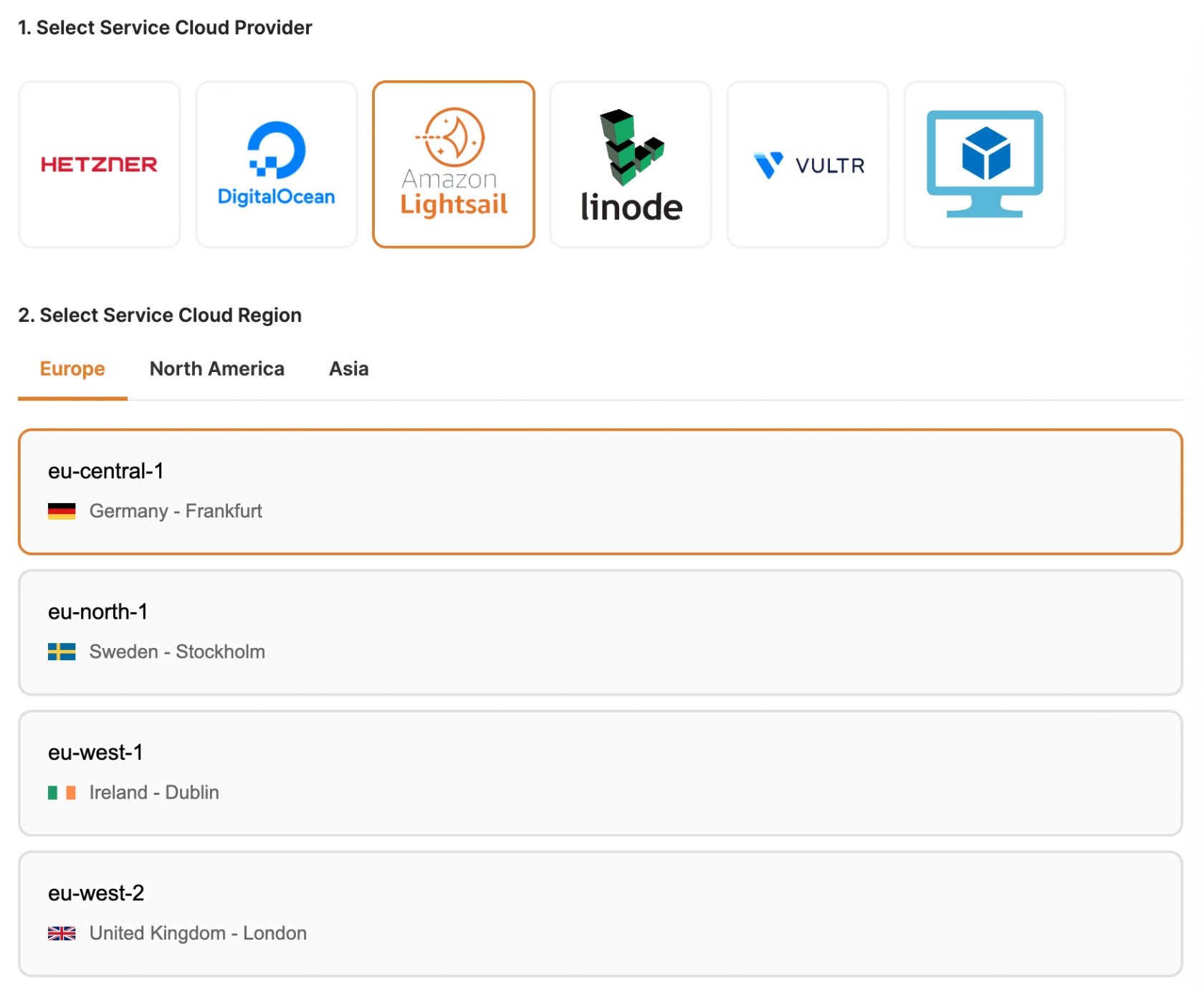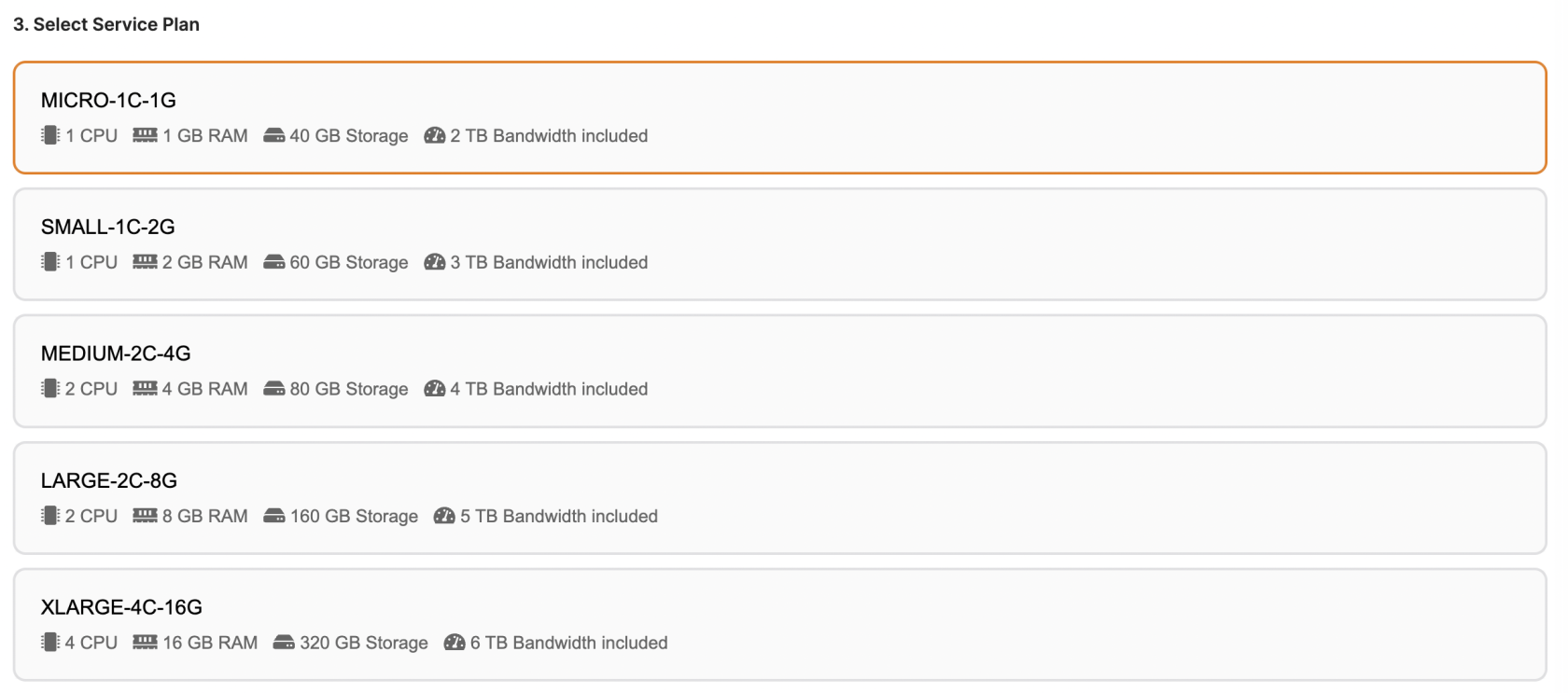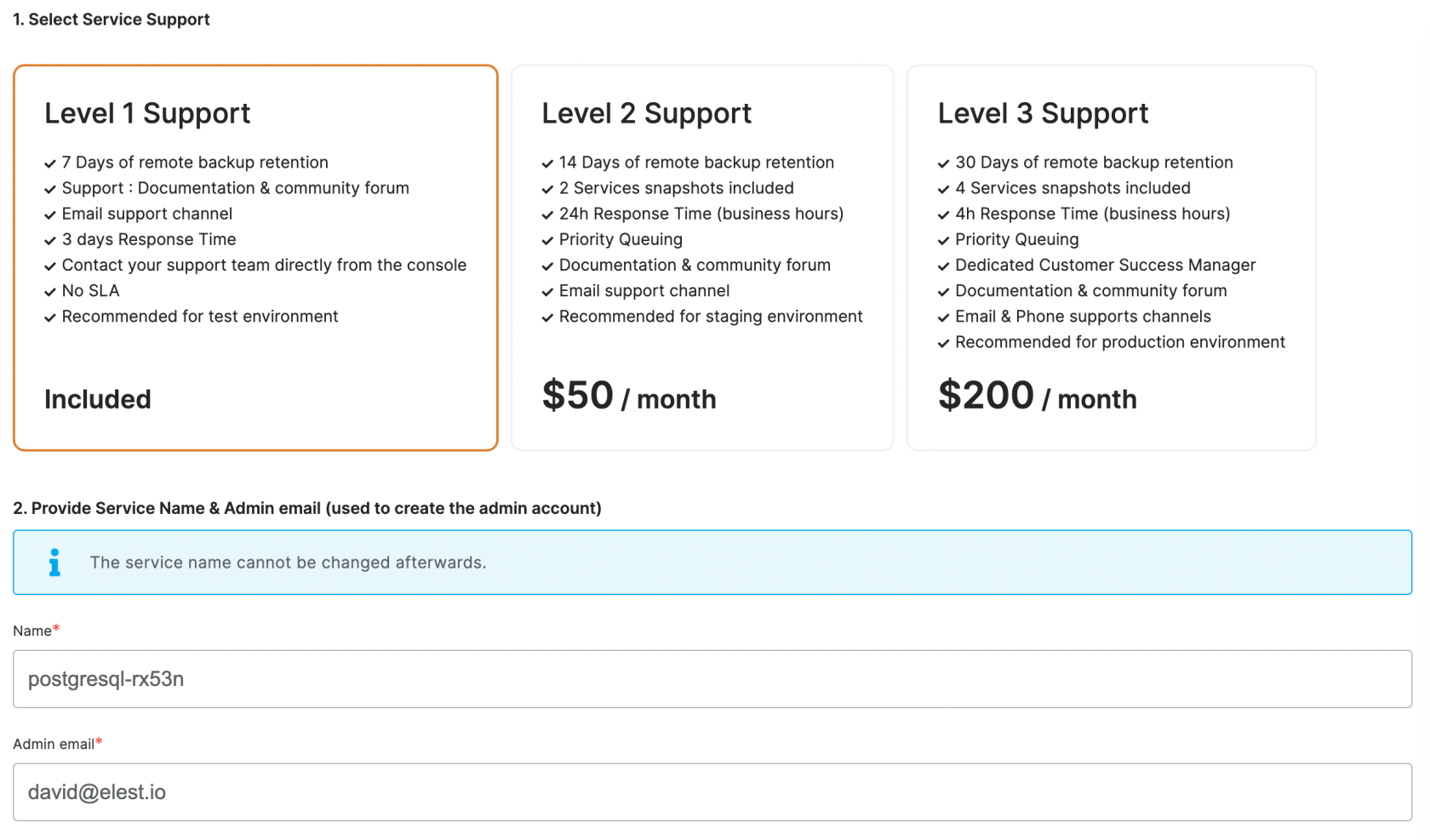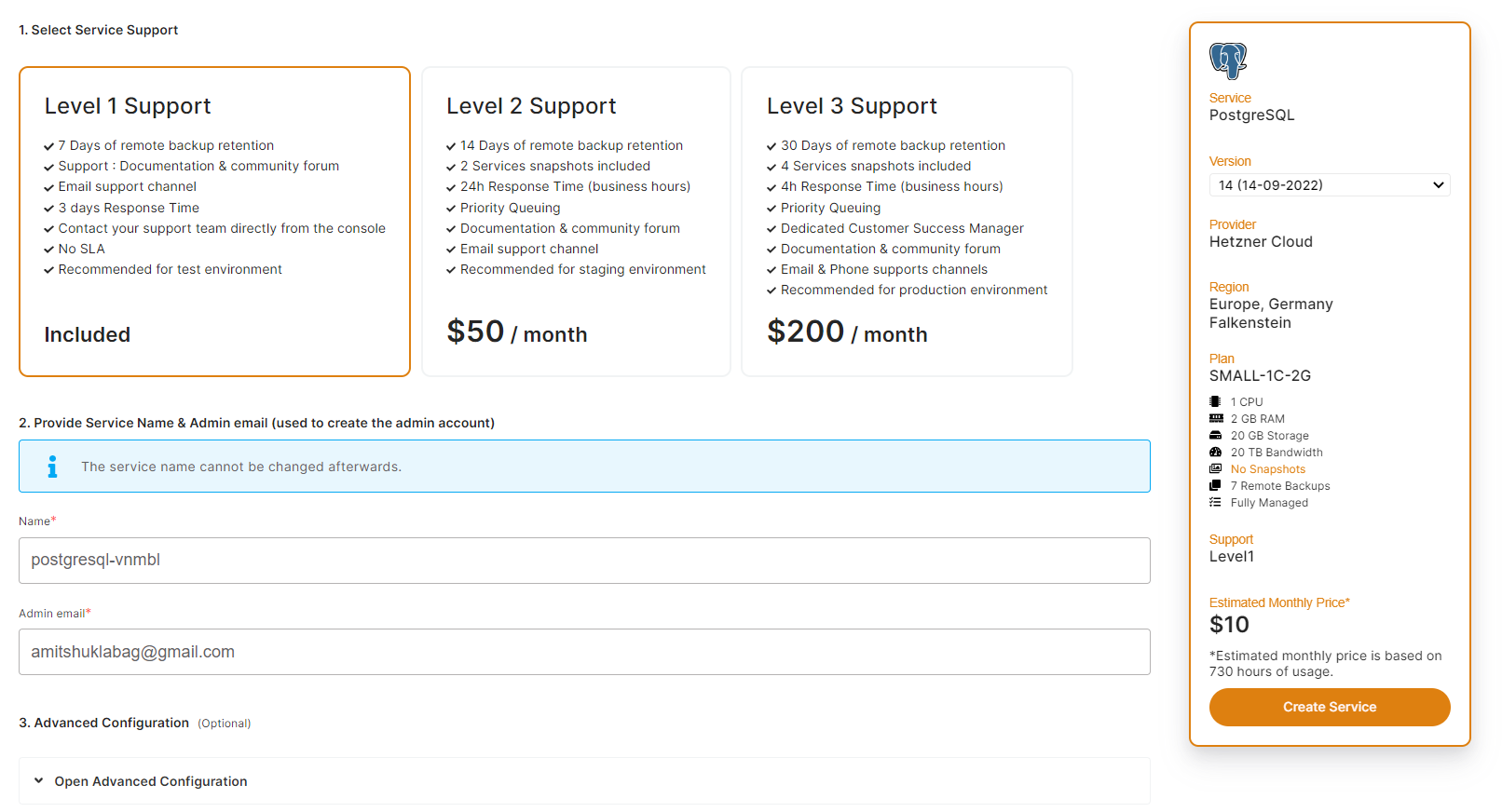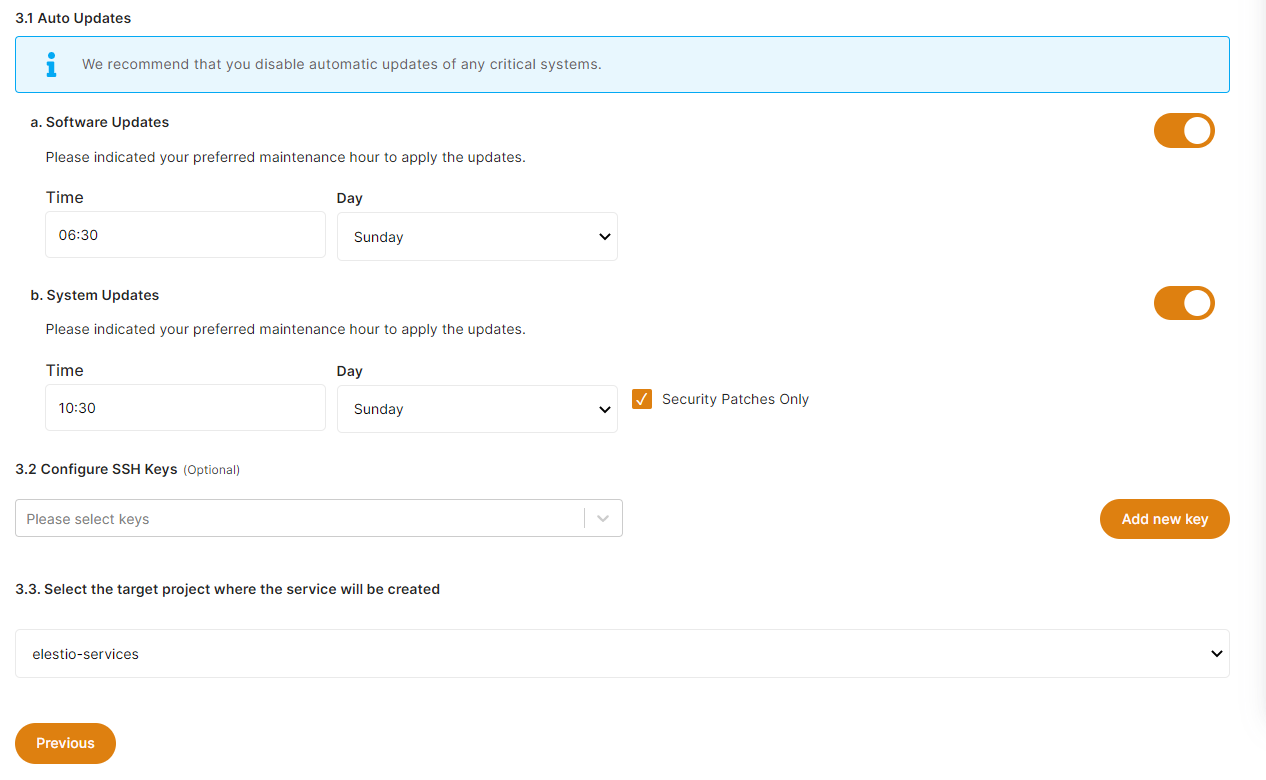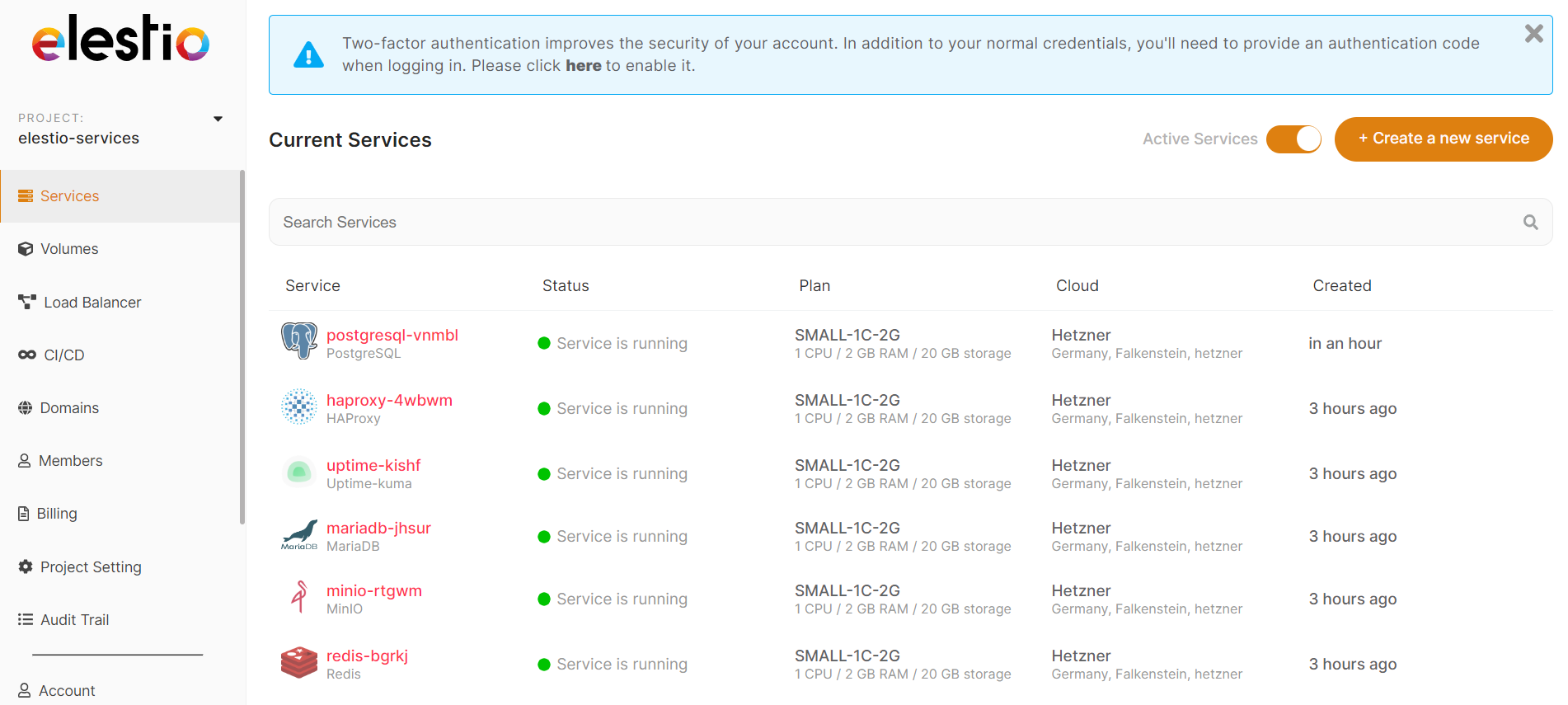Create a new service with Bring your own AWS Account
1. To create a new service, first, open Elestio Dashboard, then go to services from the left sidebar and click the button to create a new service.
-
The first step is to select a template or service to be deployed.
We offer more than 200 software templates that are supported, so you can pick the one you want to use. If you want to learn more about a specific template before using it, click the Details button. All of the templates and their details are also available on our managed services page.
Use the category tabs to filter the selection of software.
2. Select a provider, region, and data center in which to deploy your service
3. Select the instance size that works for you
5. Set the support plans, and maintenance windows for OS & software updates and give a name to your new service
OS updates include updates to the Linux kernel, security patches, and other important maintenance to keep your instance running smoothly.
Software updates update the code of the open-source application itself. We respect semantic versioning, so we will only implement minor and patch updates, in order to avoid non-breaking changes.
Maintenance windows are specified in UTC

